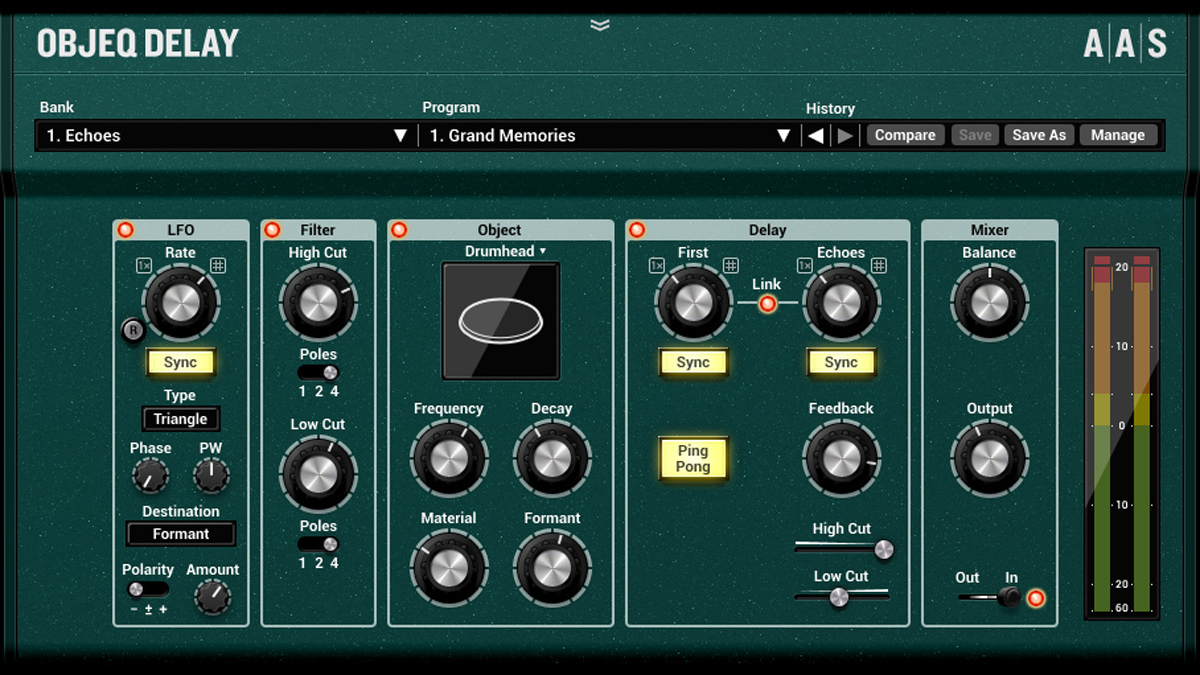Meet the programmers: Applied Acoustics Systems
We talk to Applied Acoustics’ co-founder… or is it a thoroughly detailed physically modelled version of him?

One of two founder members of Montreal-based plugin development house, Applied Acoustics Systems - whose many successes include Tassman, Ultra Analog and Lounge Lizard - Marc-Pierre Verge knows a thing or two about physical modelling….
Tell us about the history of AAS, the people behind it, and what makes your approach different.
“AAS was founded in 1998 by Philippe Dérogis and myself. We shared the same office during our PhDs in acoustics at IRCAM and we became friends. Both of us were working on sound synthesis and physical modelling.
“Back in the 90s, computer music involved big Unix mainframe computers, but PCs were becoming more powerful. We started running our algorithms on PCs with Linux, and realised we could run simple models almost in real-time. The first virtual instruments were beginning to appear on the market, which gave us the idea of starting a company.”
What sort of considerations need to be taken when modelling a real-world instrument?
“Modelling is a synthesis method based on the laws of physics. The idea is to simulate how an object or musical instrument vibrates and produces sound. Musical instruments are complex oscillating systems and we first break them down into basic components.
“In the case of a harp, for example, we would model the vibrations of the strings and the soundboard, including how they’re coupled and exchange energy. We also need a model for the finger/string interaction involved when plucking the string, and another one for the sound radiation from the soundboard and its propagation.
Get the MusicRadar Newsletter
Want all the hottest music and gear news, reviews, deals, features and more, direct to your inbox? Sign up here.
“The results of intial models are compared to measurements from real instruments and the model is fine-tuned in a back-and-forth process.”
Physical modelling plugins can often be a strain on the user’s CPU. How do you ensure you get the results you want in an efficient way?
“There’s always an optimisation phase. Some aspects might not be relevant in terms of perception, so some parts of the algorithms can be simplified. Once we have a simple model, free of bugs, we start trying different DSP techniques to optimise the implementation.”
The release of Objeq Delay sees you moving into ‘modelling as an effect’. What new challenges were presented when making it, compared with your background of creating instruments?
“This is indeed the first effect in our product line. We have always had, however, standard effect modules in our different synths. We also developed Corpus for Ableton Live.
“The main difference with the design of an effects processor is that, obviously, you don’t know in advance what kind of sounds will be processed. The challenge, therefore, lies in designing something which will be general enough to work well with different types of sounds. This implies, of course, that the effect is interesting in terms of sound but also that its parameters work well with a wide range of sounds; in other words, that it does not require too much tweaking, otherwise the fun is lost. In that sense, I think we did a good job with Objeq Delay, as it gives some nice and creative results with about all types of sounds, from sustained tones to drum loops.”


Computer Music magazine is the world’s best selling publication dedicated solely to making great music with your Mac or PC computer. Each issue it brings its lucky readers the best in cutting-edge tutorials, need-to-know, expert software reviews and even all the tools you actually need to make great music today, courtesy of our legendary CM Plugin Suite.










